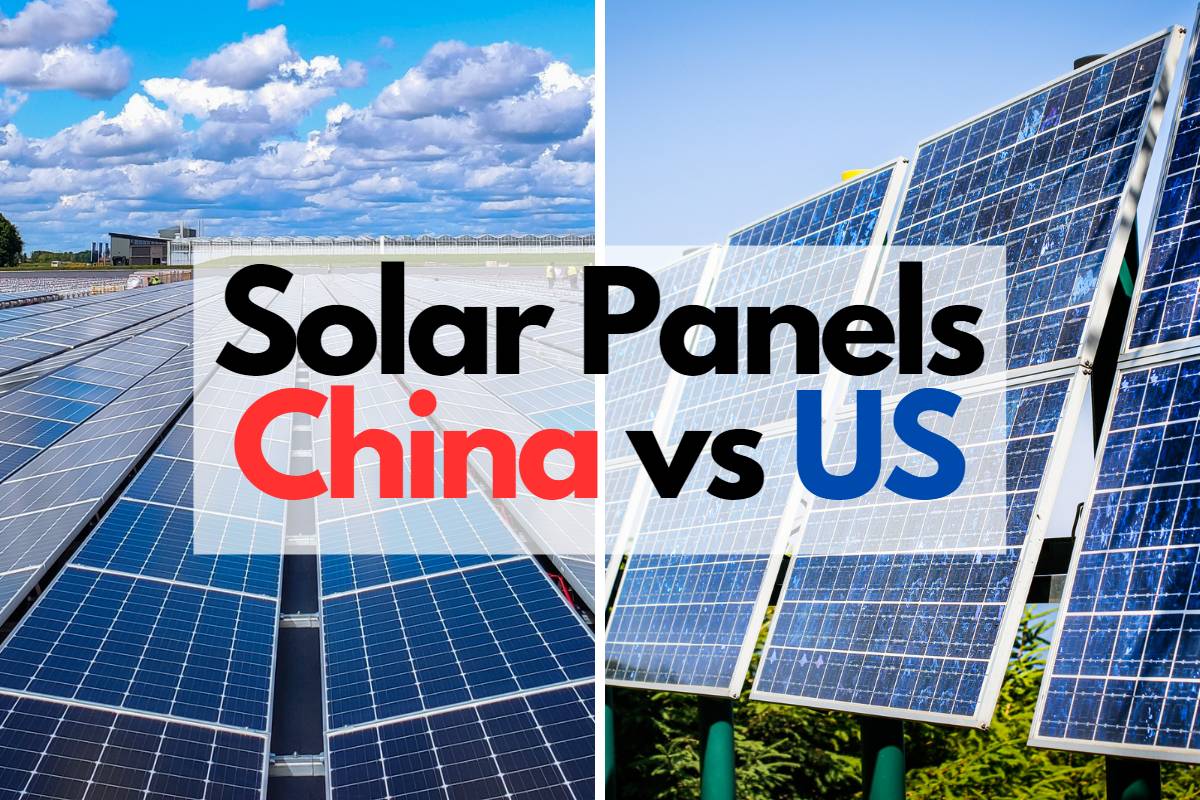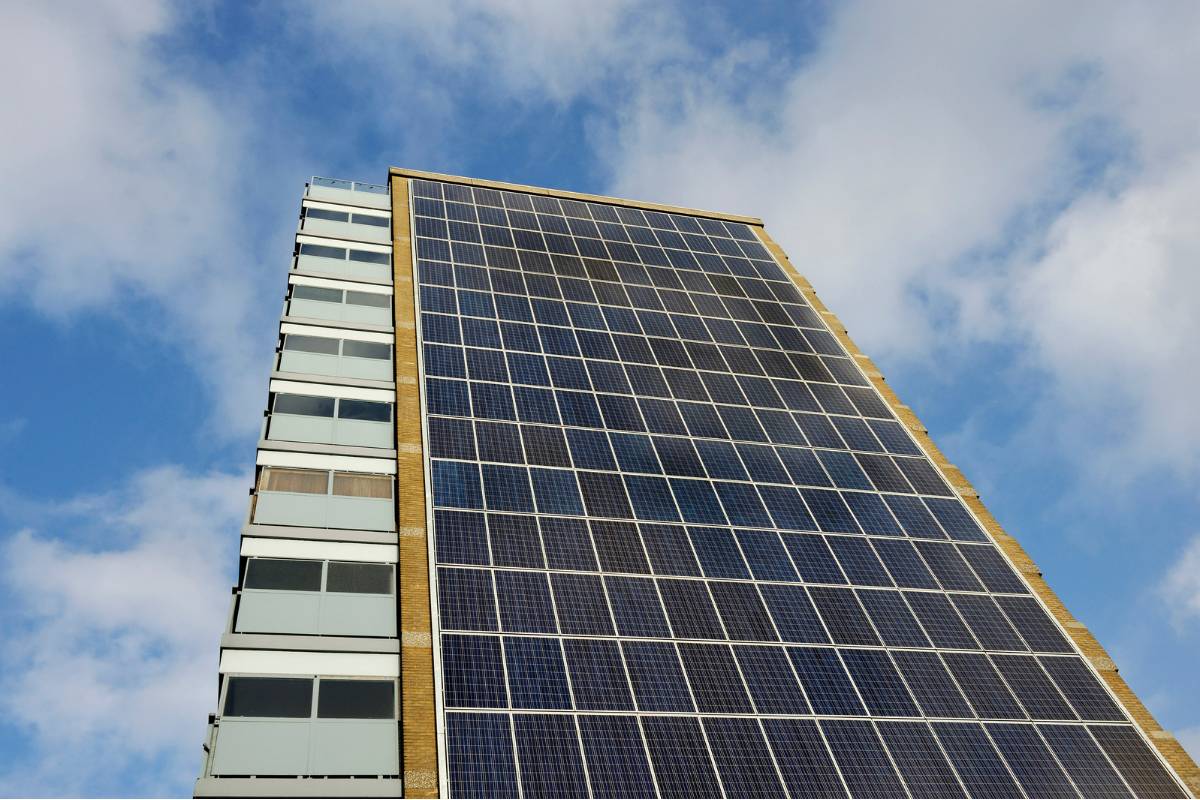Solar Panels China vs. US: Comparison

USA and China companies produce the best solar panels in the world. But which country leads the solar world?
The majority of panels that are available today are made in China. However, American-made solar panels are very effective and last longer too.
You should know the country that manufactures quality solar cells before embarking on solar installation. This article compares the American and China panels and their environmental impacts.
US Solar Panels Vs. Chinese Solar Panels
Here are some significant factors to look at when considering whether to buy American or China panels
Price of Solar Panels in China
The prices of solar panels are 2.83 CNY per watt in China. If you claim the federal solar tax credit of 30%, the price of your solar might become $10,796 after adding up.
This is because a 5.5-kW system is important to cover the energy demand of a normal house. China’s solar products have high demand in solar markets because they are affordable.
Price of Solar Panels in the US
The Center for Sustainable Energy in the US calculates the average cost of solar panels for a typical 5 kW installation to be between $15,000 and $20,000.
Most solar installers base their pricing on the wattage of the system, with a typical cost of $3 to $5 per watt.
Solar cells are produced at a lower cost with the high-quality silicon available to US solar companies. However, American solar panels cost higher than Chinese panels.
Chinese Solar Panels’ Durability
China solar panels can last for over 25 to 30 years. Also, China panels lose 0.8% of their effectiveness every year, which is known as degradation (this happens to all panels across the globe).
This doesn’t mean your solar wouldn’t produce electricity; its performance will drop. However, you can’t estimate how long your panel except it’s exposed to very harsh climate conditions (frequent hail stone, especially).
US Solar Panels’ Durability
American solar panels can last for 25 to 35 years. After the National Renewable energy laboratory discovered that solar panels’ effectiveness fell by 0.8%, the US has enhanced its solar panel production.
Some US solar panel manufacturers produce solar panels with a 0.3% degradation rate. This makes the panels more durable compared to China-made.
Chinese Solar Panel Production and Environmental Impacts
The production of Solar panels in China has some environmental impacts because of the heavy-duty machines and chemicals used. However, the products are eco-friendlier afterward.
Some Chinese solar companies use lead and cadmium (harmful components) to produce solar panels. They also use a carbon footprint manufacturing process that involves mining, melting, and cooling. This process results in gas emissions that can cause soil, air, and water pollution.
Furthermore, solar panel facilities need massive energy to keep running. They also use coal burning to melt silicon. Since China produces the highest number of panels in the solar market today, the rate of their pollution emission is a significant concern to the environment.
American-made Solar Panel Production and Environmental Impacts
Most American solar producers manufacture solar panels with silicon semiconductors, silver, glass, copper, tellurium, indium, and lithium (for making other solar equipment such battery).
Although most of these elements are non-toxic, the US producers also use the mining process, creating greenhouse gas emissions.
Moreover, US solar manufacturers care about their environment. They use countless precautions to keep humans and their environments safe. For instance, recycling materials and utilizing power-efficient methods during production.
Pros and Cons of Made-in-China Solar Panels
Pros
- Chinese solar panels, including other solar equipment, are inexpensive.
- They are effective and offer users 100% electricity.
- The panels are the best renewable energy alternatives.
- China Monocrystalline panels offer the highest energy conversion efficiency from 19 to 22%.
- They help reduce the emission of carbon.
- Chinese solar panel manufacturers provide market-size panels as well as other solar parts.
Cons
- China’s solar products consist of harmful toxins.
- The production process is not 100% environmentally friendly.
- The panel’s degradation rate is high.
Pros and Cons of Made-in-US Solar Panels
Pros
- US solar panels are made with non-toxic elements.
- They are affordable and also popular for their 100% efficiency.
- American-made solar panels’ degradation rate is very low.
- They are environmentally friendly.
- The Nation upgrades and innovates its panels frequently with the help of the SEIA (Solar Energy Industries Association).
- The panels are made with high-quality silicon and glass.
- US Solar companies have set in solar panel recycling materials.
Cons
- Panels manufacturers also use the coal mining process, which causes gas emissions.
- The US panels cost more than most country panels.
Which Panels Are the Better?

Choosing the best panel-producing country can be tricky. However, a few factors must be considered before deciding the best between China and the US. Some significant factors include silicon type, panel effectiveness, and production procedure.
Many nations produce high-quality panels, but China, the United States, and Europe are the top 3 countries that produce more panels.
China is the leading country in solar panel development. However, some American solar industries use upgraded technology during production.
Researchers say many quality solar panels worldwide are made in America or Europe. These countries are leading in research and development, which helps them enhance and upgrade their panels frequently. But in terms of affordability, China takes the lead.
Since both countries are competing side-by-side, choosing the best will depend on the buyer’s preference, distance, and budget.
Do Chinese Solar Companies Make Most Panels in the Solar Markets?
China panels are all over the solar markets. Chinese companies released 78% of panels available in the market today. Their solar polysilicon and solar cells are about 66% to 72%, respectively.
This is because Chinese companies have millions of workers with significant production skills. They also have a cost-effective labor force that aids in reducing the cost of production.
The nation supports its panel producers and encourages solar industry to set up invention facilities. Notably, there is a robust supply chain for panel modules in China.
Conclusion
As the leading country in solar energy, China has set targets to reach 1300GW in 2050. The percentage of their deployed panels is higher than that of US-installed panels.
On the other hand, the US has solar panels with higher capacity rates and high-quality silicon. They also have good policies supporting the development of solar systems.
This comparison between China solar panels and US panels will serve as a guide to knowing which to choose for your solar project. As mentioned earlier, China panels’ degradation rate is higher than US panels. But the China-made panels are available at competitive prices compared to US panels.
Nevertheless, you may need to conduct more research on both panel-producing countries to determine the one that matches your requirements.
FAQs
How Long Will a China-made Solar Panel Last?
A China-made panel will last 25 to 30 years while producing enough current. However, harsh weather conditions like frequent hailstorms can compromise the panels’ lifespan.
Which Solar Panels Have More Power?
Monocrystalline panels have more power (per sq ft) and come with the highest efficiency rates. Furthermore, they can even work well in warm weather.
Are US Panels Durable?
According to the industry standard, US panels will also last up to 25-30 years. Depending on weather conditions, they may last even longer than expected.
Do Chinese Solar Panel Manufacturers Make Solar Panels Any Good?
Chinese panels are good in terms of efficiency, affordability, and performance. Irrespective of some user complaints, the panels are worth it. China panels are also durable and can survive harsh weather changes.
As the country continues to advance in science and technology, its new panel productions may be more advanced compared to its previous ones.
